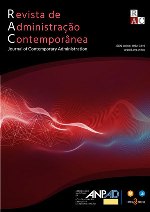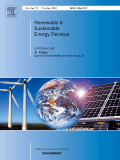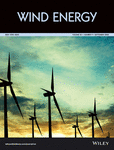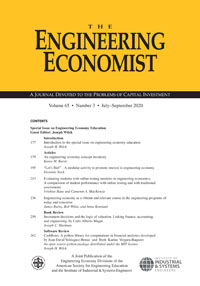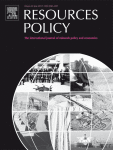Recent Publications
A Tutorial for Modeling Real Options Lattices from Project Cash Flows (2020).
Monday August 31st, 2020
Naielly Lopes Marques, Carlos de Lamare Bastian-Pinto, & Luiz E. T. Brandão (2020). Journal of Contemporary Administration, 25(1). doi: https://doi.org/10.1590/1982-7849rac2021200093
In this tutorial, we propose a code in an open-source software with intuitive guidelines to help researchers and practitioners model real options lattices from project cash flows. Our code considers the correct project’s volatility estimation, dividend yield modeling, and lattice building. The results show how real options can affect the value of projects. This tutorial provides a simple mechanism for analyzing investment opportunities in projects that have uncertainty and flexibility.
On the effects of uncertainty measures on sustainability indices: An empirical investigation in a nonlinear framework (2020).
Erick Meira de Oliveira, Felipe Arias Fogliano de Souza Cunha, Rafael Baptista Palazzi, Marcelo Cabus Klotzle, & Paula Medina Maçaira (2020). International Review of Financial Analysis, 70, 101-505. doi: https://doi.org/10.1016/j.irfa.2020.101505
We investigate the effects of uncertainty measures on the dynamics of sustainability indices across different regions of the globe in the post-crisis period under a multivariate Nonlinear Autoregressive-Distributed Lag (NARDL) framework. The results suggest that besides contributing to the Sustainable Development Goals, sustainability indices may serve as valuable tools to investors, asset managers and other stakeholders to dampen and/or offset the negative impacts of local and global measures of uncertainty, depending on the analyzed region.
Mitigating Hydrological Risk with Energy Derivatives (2019).
Gláucia Fernandes, Leonardo Lima Gomes, & Luiz Eduardo Teixeira Brandão (2018). Energy Economics, 81, 528-535. doi: https://doi.org/10.1016/j.eneco.2019.05.001
In this paper we propose an approach to formulating a collar derivative, namely an Inverted Collar, to mitigate hydrological risk considering the particularities of Brazil’s energy regulatory environment. In addition, we develop a customized collar-by-difference as a variation of the collar model. The results suggest that these derivatives are effective tools to manage hydrological risk during periods of great climatic volatility. The results also indicate that our models outperform traditional commercial hedging commonly practiced by hydropower producers in the country.
Valuing Multistage Investment Projects in the Pharmaceutical Industry (2018).
Luiz E. Brandão, Gláucia Fernandes, & James S. Dyer (2018). European Journal of Operational Research, 271(2), 720-732. doi: https://doi.org/10.1016/j.ejor.2018.05.044
We develop a real options model where the firm continuously updates its prospects of timely completion and future market conditions. We apply this model to a Research and Development (R&D) project in the pharmaceutical industry. We find that the opportunities to abandon and to expand into related markets have a significant impact on the value of the project as a whole. We show that for complex real options models, this method can be an effective way to value such projects.
A risk-hedging tool for hydro power plants (2018).
Gláucia Fernandes, Leonardo Lima Gomes, & Luiz Eduardo Teixeira Brandão (2018). Renewable and Sustainable Energy Reviews, 90, 370-378. doi: https://doi.org/10.1016/j.rser.2018.03.081
In this article we propose a redesign of energy contracts so that hydropower generators are allowed to sell part of their energy per water availability. By adding this flexibility, the contracting rules can more closely mimic the physical operation of the system, where energy sources can be optimally switched between hydro and thermal plants and the hydrological risk is reduced. The results suggest that this model can reduce the risk to the hydro generators with no impact on the total system cost.
Wind farm generation forecast and optimal maintenance schedule model (2019).
Jonas C. Pelajo, Luiz E.T. Brandão, Leonardo L. Gomes, & Marcelo C. Klotzle (2019). Wind Energy, 22(12), 1872-1890. doi: https://doi.org/10.1002/we.2405
We develop a model to determine the optimal maintenance schedule of a wind farm based on forecasted wind speeds and energy prices. We analyze a window of opportunity in the most likely period of the year and perform weekly updates of expected wind speeds and energy price forecasts. We test these models with actual data from a wind farm in the Brazilian Northeast. The results suggest that this model is close to the optimal stopping date considering perfect information on future wind speeds and electricity prices.
Crypto-assets portfolio optimization under the omega measure (2020).
Javier Gutiérrez Castro, Edison Américo Huarsaya Tito, Luiz Eduardo Teixeira Brandão, & Leonardo Lima Gomes (2020). The Engineering Economist, 65(2), 114-134. doi: https://doi.org/10.1080/0013791X.2019.1668098
The traditional portfolio analysis approach of Markowitz is not appropriate for use with portfolios containing crypto-assets, as the model requires that the investor have a quadratic utility function or that the returns be normally distributed. We develop a portfolio optimization model based on the Omega measure and apply this to four crypto-asset investment portfolios. The results indicate that these portfolios should favor traditional market assets over crypto-assets.
The Fama-French’s five-factor model relation with interest rates and macro variables (2020).
André Luis Leite, Marcelo Cabus Klotzle, Antonio Carlos Figueiredo Pinto, & Claudio Henrique da Silveira Barbedo (2020). North American Journal of Economics and Finance, 53, 101-197. doi: https://doi.org/10.1016/j.najef.2020.101197
Innovations in variables describing future investment opportunities command a risk premium and are correlated with Fama-French factors. In the presence of CPI, RMW loses its explanatory power, and all Fama-French factors lose their explanatory ability. We show that for US data, inflation’s innovations not only proxy for RMW, but a model including only excess market returns, shocks to CPI and term structure’s slope explain the cross section of average returns better than innovations to the previous literature’s four-variable set and Fama-French five-factor model.
A Real Options Model with Games Applied to the Rio de Janeiro Residential Real Estate Market (2019)
Glaudiane Lilian de Almeida, Marco Antonio Guimarães Dias, Luiz Eduardo Teixeira Brandao, & Carlos Patricio Mercado Samanez. Review of Business Management, 21(1), 118-135. doi: https://doi.org/10.7819/rbgn.v21i1.3966
We determine the optimal investment strategy in Nash equilibrium for the residential real estate market of Rio de Janeiro, considering the uncertainty in the demand for real estate and the number of active competitors in the market. The results show that the larger the number of competitors, the lower the level of demand required for investment in new units. This study modified the methodology of Grenadier (2002), providing a more adequate and robust specification of the uncertainty for the demand function
A dynamic model for valuing flexible mining exploration projects under uncertainty (2017)
Sunday January 7th, 2018
Oscar Miranda, Luiz E. Brandão, & Juan Lazo Lazo. (2017). Resources Policy, 52, 393-404. doi: https://doi.org/10.1016/j.resourpol.2017.04.002
In this article we develop a dynamic model for the assessment of the financial viability of flexible mining projects in the exploration stage (junior mines). We assume the firm has the option to defer the initial investment for a period of time, and once invested, has the additional flexibility to expand or even abandon the project. The model simulates the managerial decision making process and determines the value of the flexibility, or real options, associated with the mining project. On the other hand, for the case of firms that are listed in the stock market, the model assesses the likely impact of these options on the firm´s market value. We present a case study where we apply this model to a silver junior mining venture in Perú. The results indicate that the combined real options associated with the project may have a significant impact on its value, suggesting that the firm´s stock is undervalued by approximately 25%.
Feeder Cattle Options: Where’s the Beef? (2017)
Gláucia Fernandes, Luiz Eduardo Teixeira Brandão, & Carlos de Lamare Bastian Pinto. (2017). Latin American Business Review, 18(3-4), 317-339. doi:htt
Feeder cattle is one of the most important commodities in the livestock industry worldwide. Nonetheless, beef production is subject to many uncertainties; therefore, the risk management tools that agents use must be efficient. This article discusses the financial options available in the Brazilian futures market to feeder cattle producers and describes the best risk pricing model to determine the option premium. Our results consider several option pricing models and different types of volatility. The best pricing is obtained with the model of Bjerksund and Stensland with the implied volatility.
Mitigating wind exposure with zero-cost collar insurance (2016)
Tuesday December 27th, 2016
Glaucia Fernandes, Leonardo Gomes, Gabriel Vasconcelos & Luiz Brandão (2016). Renewable Energy, 99, 336-346. doi: http://dx.doi.org/10.1016/j.renene.2016.07.016
Renewable energy generation worldwide has relied increasingly on wind farms where wind energy is transformed into electricity. On the other hand, electricity prices are uncertain and wind speeds are highly variable, which exposes the producer to risks. Typically wind power producers enter into long term fixed price contracts in order to hedge against energy price risk, but these contracts expose the wind farm to energy volume risk, as they require delivery of the full amount of energy contracted, even if energy production falls short due to low wind speeds. To mitigate this risk, wind producers can purchase insurance. This article proposes a zero-cost collar insurance and develop a stochastic model to determine the feasible range of wind strikes for both the wind farm and the insurer. The results indicate there is a set of possible strike combinations that meets the objectives of both parties.
Valuing flexibility in electro-intensive industries: the case of an aluminum smelter (2016)
Carlos Bastian-Pinto, Luiz Brandão, & Luiz Ozório (2016). Production, 26(1), 28-38. doi: http://dx.doi.org/10.1590/0103-6513.174214
Electro-intensive industries account for a significant proportion of the total industrial electricity consumption, and these industries usually possess co-generation assets, which can supply at least part of their energy needs. However, due to price uncertainty, it may be optimal for the firm to temporarily suspend production and sell the available energy. If this strategy creates value, governments can create incentives through price signals for these firms to take their plants offline and increase the supply of electricity during times of shortage. This study analyzes the case of an aluminum plant that has the choice of temporarily suspending operations and models its managerial flexibility as a bundle of European switch options. The suspension and modeling would occur under two simultaneous situations, uncertainty and asymmetric state switching costs under the real options approach, to determine whether the changes add value to the firm. The results indicate that this flexibility can add significant value to the firm.
Electricity prices forecast analysis using the extreme value theory (2016)
Mario Domingues de Paula Simões, Marcelo Cabus Klotzle, Antonio Carlos Figueiredo Pinto and Leonardo Lima Gomes (2016). International Journal of Financial Markets and Derivatives, 5(1), 1-22. doi: 10.1504/ijfmd.2016.076973
The present work attempts to evaluate the risk attached to electricity price forecasts. Initially, an analysis of prices series from different observation frequencies and, as expected, the volatility attenuation as a function of decreased observation frequency, for the same data, is observed. Next, a price forecast is made using a widely established and well used ARMA model. The distribution of residues of this forecast is modelled by a Gaussian curve and a generalised Pareto distribution, as well as its empirical distribution, following which the risk metrics VaR and CVaR are calculated. The Gaussian approximation shows to be appropriate for the estimation of forecast errors at low quantiles, up to 95%, for both daily and hourly data, but underestimates CVaR. The GPD distribution proves to be accurate and safe for the use of CVaR at any observation frequency, while it is introduced a novel GPD combination technique for the use of CVaR at extreme quantiles.
A model for valuing new technologies under a pull incentives (2016)
Friday January 22nd, 2016
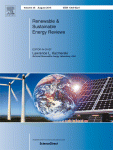
Glaucia Fernandes; Fernanda Perobelli; Luiz E. Brandão, (2016). Renewable and Sustainable Energy Reviews, 59, 482-493. doi: http://dx.doi.org/10.1016/j.rser.2016.01.007
In this article we propose an adaptation of a real option model for valuing R&D projects where we incorporate a pull incentive for the final product using a market sales function that decreases in time and is strictly positive over the product׳s life cycle. We apply this model to the case of the development of a Power Line Communication modem (PLC) for Smart Grids in the Brazilian electricity market, where a power utility firm agreed to bear part of the development risk by means of a minimum guaranteed demand, and solve using Monte Carlo simulation. The results suggest that this guarantee has significant impact on the project value, which is not captured by traditional valuation methods or even real option methods that do not incorporate this concept.
Uncertainty and Flexibility in the Brazilian Beef Livestock Sector: the Value of the Confinement Option (2015)
Tuesday January 19th, 2016

Carlos Bastian Pinto, Alexandre Ramos, Luiz Ozorio, Luiz Brandão, BBR Brazilian Business Review, 12(6), 100-120
http://dx.doi.org/10.15728/bbr.2015.12.6.5
In this work, the value of existing operational flexibility is evaluated, its emergence being attributable to the Brazilian livestock alternatives for cattle fattening, i.e. by maintenance in pasture or through confinement. This crucial sector of the Brazilian economy, the second largest in the world, is highly fragmented, features low return margins and is subject to significant uncertainty factors. Confinement increases cattle fattening speed and when compared against maintenance in pasture it maximizes return on investment for farmers. In spite of this, confinement decision making is dependent upon appropriate time management. Confinement also poses risks related to the volatility of feed costs. Through the Real Options management methodology, assessment of financial growth in livestock fattening is directly linked to flexibility of timing in the transfer of cattle from pasture to confinement, with the presence of associated uncertainties. The results indicate that there is a significant increase in financial returns through containment, calculated using the return per head system. They also point to the importance of correct confinement timing to maximize returns
Non linear models and the load of an electricity distributor. (2015)
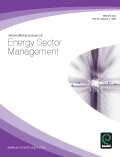
Mario Simoes, Marcelo Klotzle, Antonio Carlos Figueiredo and Leonardo Lima, International Journal of Energy Sector Management, vol 9(1), 38-56.
http://dx.doi.org/10.1108/IJESM-02-2014-0001
The purpose of this study is to ascertain whether nonlinearities could be present in electricity loads observed in subtropical environments, where none or little heating is required, and whether threshold autoregressive (TAR)-type regime switching models could be advantageous in the modeling of those loads. The actual observed load of a Brazilian regional electricity distributor from January 2013 to August 2012 was modeled using a popularly employed ARMA model for reference, and smooth and non-smooth TAR transition (non-linear) models were used as non-linear regime switching models. Evidence of nonlinearities were found in the load series, and evidence was also found on the intrinsic resistance of this type of models to structural breaks in the data. Additionally, to reacting well to asymmetries in the data, these models avoid the use of exogenous variables. Altogether, this could prove to be a definite advantage of the use of such model alternatives. However, even if the present work may have been limited by the observation frequency of the available data, it appears TAR models appear to be a viable alternative to forecasting short-term electricity loads. Nonetheless, additional research is required to achieve a higher accuracy of forecast data. If such models can be successfully used, it will be a great advantage for electricity generators, as the computational effort involved in the use of such models is not significantly larger than regular linear ones.To our knowledge, this type of research has not yet been made with subtropical/tropical electricity load data.
Investor´s Asymmetric Views and their Decision to enter Brazil’s Wind Energy Sector (2014)
Sunday January 10th, 2016
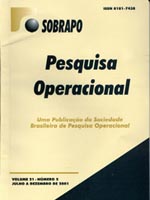
Dalbem, Marta Corrêa; Gomes, Leonardo Lima and Brandao, Luiz Eduardo Teixeira. 2014, Pesquisa Operacional, Vol.34, N.2, Pp. 319-345.
http://dx.doi.org/10.1590/0101-7438.2014.034.02.0319
Market players’ investment decisions sometimes surprise analysts, especially when projects that are less feasible in financial terms enter first in the market, before more viable projects. One possible explanation is that firms have different expectations concerning the future of the market. In this article we use the Option-Games approach for asymmetric duopolies to analyze investors’ decisions in the first auction for wind power in Brazil, held in 2009, in which some less viable firms pushed more viable firms out of the auction. Our analysis shows that even small differences in the investors’ views can yield this unexpected result. When uncertainty is low and expectations are symmetric, the outcome is a lower energy tariff as well as a stronger wind industry in Brazil, highlighting the importance of a clear and credible long term governmental policy, not only for the wind industry, but also for any other industry in its early stages.
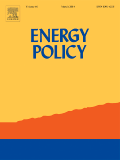
Can the regulated market help foster a free market for wind energy in Brazil? (2014)
Monday March 2nd, 2015
Marta Dalbem, Luiz Brandão, Leonardo Lima. Energy Policy 66 (2014) 303–311.
http://dx.doi.org/10.1016/j.enpol.2013.11.019
Wind energy has been negotiated in Brazil’s regulated market through auctions organized by the government. Bilateral negotiations in the free market have been scarce. In 2011 wind farms were allowed to bid in ‘A minus 5 (A-5)’ auctions, for energy with first delivery date 5 years ahead. This new design was expected to stimulate negotiations in the free market, as the 20-year contract in the regulated market eases financing while the 5-year grace period grants wind farms the option to sell whatever energy is generated beforehand in the free market. We modeled bidders’ price decision in A-5 auctions as Real Options and concluded that given the low prices averaging USD 50/MWh, winners are tempted to defer investment, expecting more favorable equipment and energy prices, or a better knowledge of the wind site. Construction is likely to begin in 2-3 years, with little time left for the free market. Bidders that consider the option of eventually abandoning the project are more price competitive, increasing chances that some wind farms will never materialize. Therefore, this attempt to foster the free market may not pay-off and, moreover, it may have the unfavorable effect of turning Brazil’s energy expansion planning a more difficult task.

Switching outputs in a bioenergy cogeneration project: A real options approach (2014)
Saturday June 14th, 2014
Denis de Oliveira, Luiz E. Brandao, Rafael Igrejas, and Leonardo Lima. Renewable and Sustainable Energy Reviews 36, no. 0 (2014): 74-8.
http://dx.doi.org/10.1016/j.rser.2014.04.023
Environmental concerns have stimulated the search for economically feasible renewable energy projects. In this article we analyze the feasibility of installing a cogeneration unit in an industrial plant in Brazil in order to extract value from biomass residue currently discarded, which can be used for thermal and electric energy generation. The cogeneration unit also allows the firm the flexibility to optimally choose between an increase in production or the generation of surplus energy for sale in the short term market, once additional investment in interconnection to the grid is made. We model the uncertainty over future energy prices as a mean reverting process with jumps and seasonality and the embedded flexibility as a bundle of European options under the real options approach. The results indicate that the investment in the cogeneration plant is warranted and that the option to switch outputs adds significant value to the project, which suggests that biomass residue may be a sustainable energy alternative in this case.

Elephant grass biorefineries: towards a cleaner Brazilian energy matrix? (2014)
Friday April 18th, 2014
Carlos Frederico Fontoura, Luiz E. Brandão, Leonardo Lima. Journal of Cleaner Production (2014).
http://dx.doi.org/10.1016/j.jclepro.2014.02.062
The share of the Brazilian domestic energy supplied by renewable energy is the highest among all major economies in the world. Nonetheless, there are opportunities to increase this even further. One such opportunity is the adoption of biorefineries to replace the need for oil, coal, natural gas and other non-renewable energy sources with biomass. The fact that biomass has the flexibility to be converted into distinct outputs such as electricity, biofuels, charcoal and chemicals, along with the uncertainty regarding market prices, may allow the firm to create value from the optimal exercise of these embedded options. The objective of this study is to analyze the feasibility if converting a biomass power plant based on Elephant grass into a biorefinery. The analysis was conducted by adopting a hybrid commercialization model where part of the plant’s power generation installed capacity was sold through a 20 year long-term fixed supply contract and the remainder was optimally negotiated in the short-term market in the form electricity, charcoal or ethanol. The results show that the resulting NPVs of all biorefinery strategies were positive, which indicates that biorefineries using the commercialization scheme proposed in this study represent a feasible and interesting opportunity for a sustainable energy matrix diversification.
Real option valuation of start-up firms: the case of the biotechnology industry (2013)

Pedro Rodrigues, Vicente Ferreira, Celso Lemme, Luiz Brandão. Gest. Prod., São Carlos, v. 20, n. 3, p. 511-523, 2013
http://dx.doi.org/10.1590/S0104-530X2013000300002
In this study we value a biotech start-up company using the Real Options method. The main goal is to verify whether Real Options is a better pricing method for tech or biotech firms that operate in an uncertain enviroment and to measure the value of the embedded flexibilities that are common in this sort of venture. In order to verify by how much such a firm would be undervalued when usign the Discounted Cash Flow method relative to Real Options, we analyzed the case of BioNatural, a start up biotech company. The results indicate that the firm is underestimated by aproximately 16%. The results indicate that the real options approach may be more appropriate to value projects ubject to extreme uncertainty, capturing a value not measured by traditional project valuation methods.

Investment decision in integrated steel plants under uncertainty (2013)
Luiz Ozorio, Carlos Bastian-Pinto, Tara Baidya, Luiz Brandão; International Review of Financial Analysis 27(0), 55-64.
doi. http://dx.doi.org/10.1016/j.irfa.2012.06.003
The production of steel in integrated plants typically implies greater investment, but is more cost-competitive as it provides greater economies of scale. The disadvantage of this method is that the furnaces need to work almost continuously through their life span, thus reducing the flexibility of production adjustment tomarket demands. To attenuate this problem, investments in lamination assets are commonlymade, generating the possibility of production diversification and valuable switch options. This work values an output switch option in a hypothetical integrated steel plant composed of a blast furnace and a hot laminator. Results show that this option can generate a significant increase in the NPV of blast furnace plants. Results also emphasize the importance of correctly choosing the stochastic process for the underlying uncertainty and the effect it may have on the switch option value.
An evaluation of the volatility of soybeans prices in the international market using high frequency data (2012)
Monday January 21st, 2013

Mario Domingues Simões, Marcelo Cabus Klotzle, Antonio Carlos Figueiredo Pinto, & Gabriel Levrini, 2012. Gestão & Produção, 19(1), 219-231.
http://dx.doi.org/10.1590/S0104-530X2012000100015
Five volatility prediction models were evaluated using a series of soybeans prices, a commodity traded in the CBOT, using high-frequency data. The models used belonged to the GARCH, FIGARCH and ARFIMA families. The commodity price series showed distinct characteristics from the financial assets possibly due to the continuity of the price series studied due to the global negotiation nature of this commodity. We conclude that the high-frequency price data do provide additional information to the traditional daily time series, also in the case of soybeans, and that the traditional GARCH(1,1) model also has good performance on the high-frequency price data just like those of the ARFIMA family.
Government Supports in Public–Private Partnership Contracts: Metro Line 4 of the São Paulo Subway System (2012)
Thursday January 10th, 2013
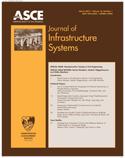
Luiz E. Brandão, Carlos Bastian-Pinto, Leonardo Lima Gomes, & Marina Labes (2012). Journal of Infrastructure Systems, 18(3), 218-225.
http://dx.doi.org/10.1061/(ASCE)IS.1943-555X.0000095, 218-225.
In November 2005, the state government of São Paulo, Brazil, announced the intention to bid a 30-year contract to build, operate, and explore passenger services for the Metro Line 4 of the São Paulo Metropolitan Subway System. Given the high risk of the project, to attract private investors the bid documents stipulated that the government would offer risk-mitigation mechanisms such as subsidy payments and a minimum demand guarantee (MDG). Because an MDG has option-like characteristics, the real-options approach is used to analyze the effect of these incentives on the value and the risk of the Metro Line 4 concession project, and their cost and risk to the government. The results indicate that the incentives proposed are effective in reducing the risk, and increase the net value of the project by 36% at a cost to the government of 5% of the total value of the project. Additionally, it is shown that for a given cost, the most effective risk-reduction mechanisms are the ones that include a higher portion of minimum demand guarantees relative to the subsidy payment.
Volatility estimation for stochastic project value models (2012)
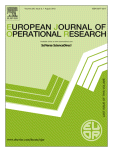
Luiz E. Brandão, James S. Dyer, & Warren J. Hahn (2012). European Journal of Operational Research, 220(3), 642-648.
http://dx.doi.org/10.1016/j.ejor.2012.01.059
One of the key parameters in modeling capital budgeting decisions for investments with embedded options is the project volatility. Most often, however, there is no market or historical data available to provide an accurate estimate for this parameter. Nonetheless, the simulation estimation method originally suggested for this purpose systematically overstates the project volatility, which can result in incorrect option values and non-optimal investment decisions. In this article, we analytically show the source of the overestimation bias and the adjustment necessary to remove it. We then generalize this development for the cases of levered cash flows and non-constant volatility. In each case, we use an example problem to show how a revised estimation methodology can be applied.
Governmental incentives in PPP: an analysis with real options (2012)

Luiz E. T. Brandão, Carlos Bastian-Pinto, Leonardo Lima Gomes, & Marina Schwab Salgado (2012). Revista de Administração de Empresas, 52(1), 10-23.
On November 2005 the State Government of São Paulo, Brazil, announced the intention to bid a contract to provide passenger services for the Line 4 of the São Paulo Metropolitan Subway System. In this article we use the real options approach to analyze the effect of the government guarantees provided in the contract on the value and the risk of the project, as well as the cost and the risk of these guarantees to the government. The results indicate that the incentives proposed are effective in reducing the risk and increase the net value of the Project by 36% at a cost to the State of only 5% of the total value of the project. Additionally, we show that for a given cost to the government, the most effective risk reduction mechanisms are the ones that include a higher portion of demand guarantees in relation to the investment subsidy.
Analysis of the Dynamics of the Brazilian Forward Market for Electricity (2012)

Cristina Pimenta de Mello Spineti Luz, Leonardo Lima Gomes, & Luiz Eduardo Teixeira Brandão (2012). Revista Brasileira de Gestão de Negócios, 14(44), 314-334.
Between 1996 and 2003, several countries, including Brazil, restructured their electricity sectors and established free markets for energy trading. The growth of these markets has required the adaptation of financial instruments for risk management and return to the particulars of each market. In Brazil, the market still has a disorganized and decentralized over-the-counter market (OTC) structure, which is more difficult to analyze due to the lack of public information. In this setting, the bilaterally negotiated forward contracts for electricity are the primary instruments to mitigate risks and evaluate investments. The objective of this study is to better understand the dynamics of the forward price of electricity negotiated in Brazil and we propose a method to construct the forward curve based only on market information and show an application of this approach. Our results indicate that the Brazilian forward market of electricity has a contango behaviour in certain periods, high risk premiums and only partial adherence of forward prices to the expectations of future spot prices.
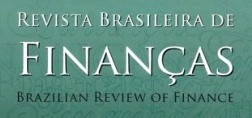
Mean Reversion with Drift and Real Options in Steel Industry (2012)
Luiz de Magalhães Ozorio, Carlos de Lamare Bastian-Pinto, Tara Keshar Nanda Baidya, & Luiz Eduardo Teixeira Brandão (2012). RBFin – Brazilian Review of Finance, 10(2), 215-241.
Steel is a commodity with significant price volatility and the choice of stochastic process that better describes its price performance is a fundamental issue in real options valuation in steel industry projects. As verified with other commodities, it is assumed that steel prices can be led partially by a mean reversion component, but the analysis of some economic issues related to production indicates that steel prices may also have a rising drift component. This, in practical terms, would increase the long term mean with time. We develop a Mean Reversion with Drift (MRM-D) model in which a deterministic tendency is attached to the long term equilibrium level in order to capture the increase of steel production marginal cost and analyze the implications of using this model in the valuation of steel sector projects.
Seasonnalization Decision of Contracts for the Supply of Electricity in Brazil Through Optimization of the Omega Measure (2011)
Monday January 7th, 2013
![]()
Mario Domingues Paula Simões, & Leonardo Lima Gomes. REAd. Revista Eletrônica de Administração (Porto Alegre), 17(1).
Electricity supply contracts in Brazil display flexibilities such as the possibility of seasonalizing the contracted energy supply as long as the total delivered during the contract is equal to that contracted. We use the omega measure to optimally define the best energy supply profile for the twelve months of the contract time span.
Swing Options in the Brazilian Electricity Market
Sunday January 6th, 2013
Mario Domingues de Paula Simões, Denis Luis de Oliveira, Antonio Carlos Figueiredo Pinto, Marcelo Cabus Klotzle, & Leonardo Lima Gomes. Revista de Economia e Administração (Impresso), 10 (4), 591-610.
Based on 406 observations of settlement price of differences (PLD), between January 2003 and September 2010 that were modeled using Ornstein-Uhlenbeck standard arithmetic mean reverting model, the swing option in the electricity market was modeled through a multi-layered trinomial tree (Forest), with the help of a routine implemented in the Matlab ®. The results demonstrate that the value of additional amount of swing options in a contract is decreasing with the number of embedded options.
